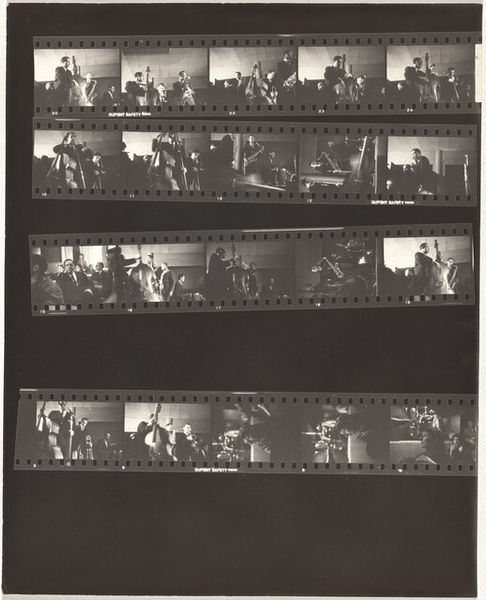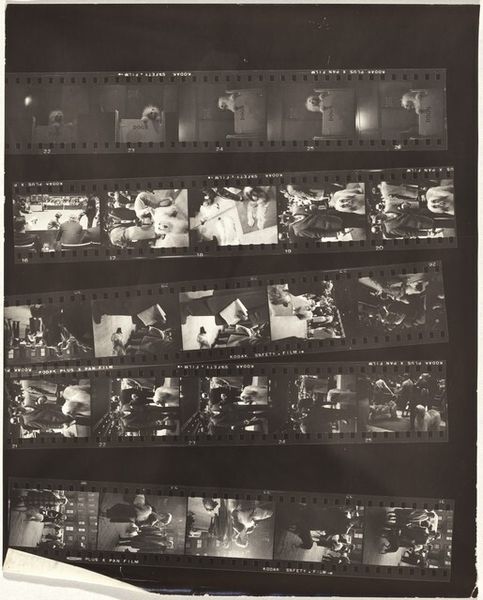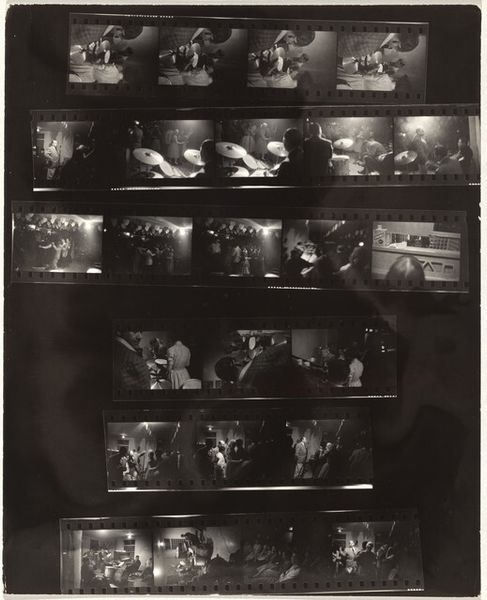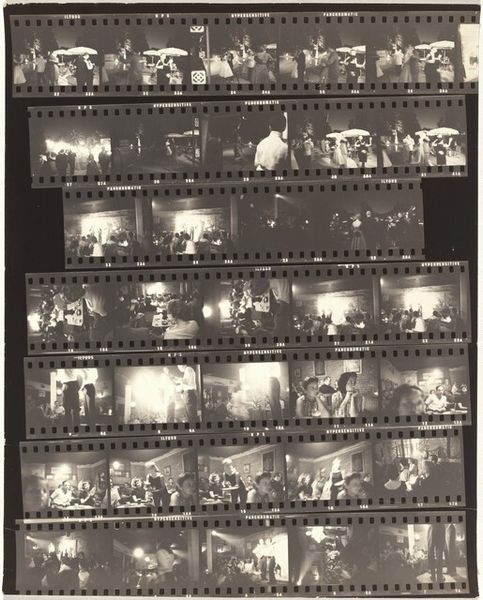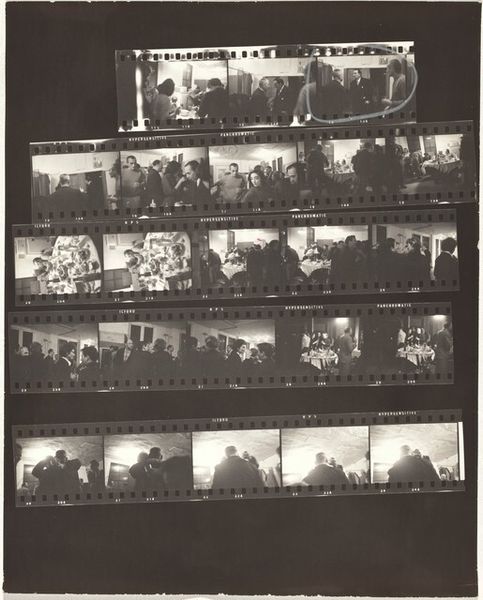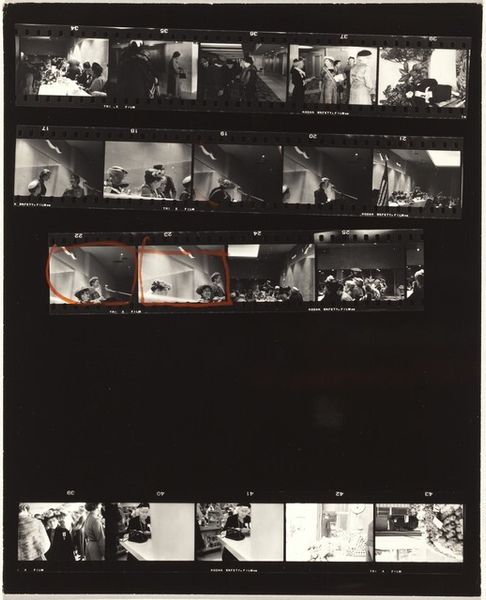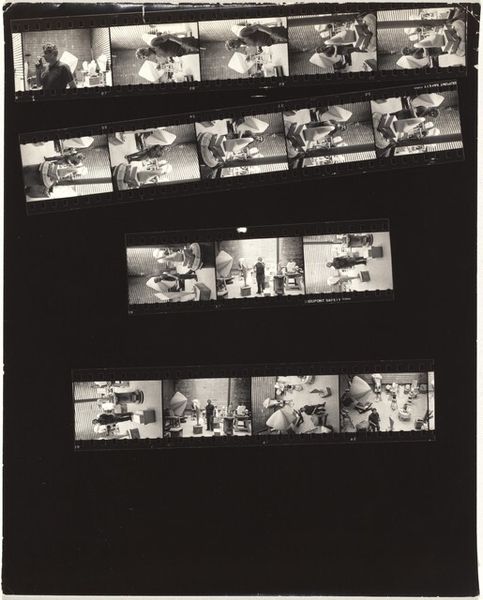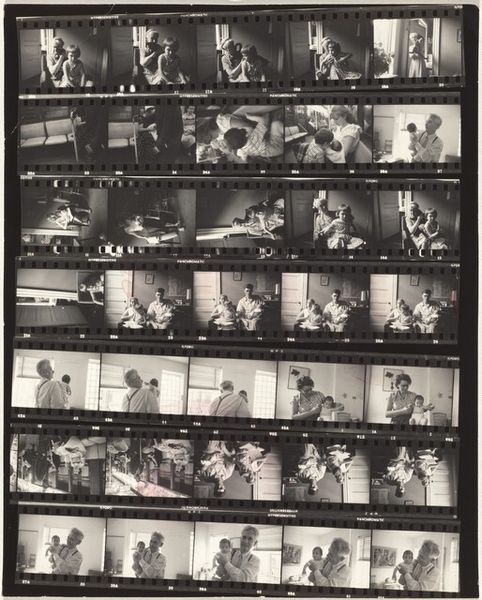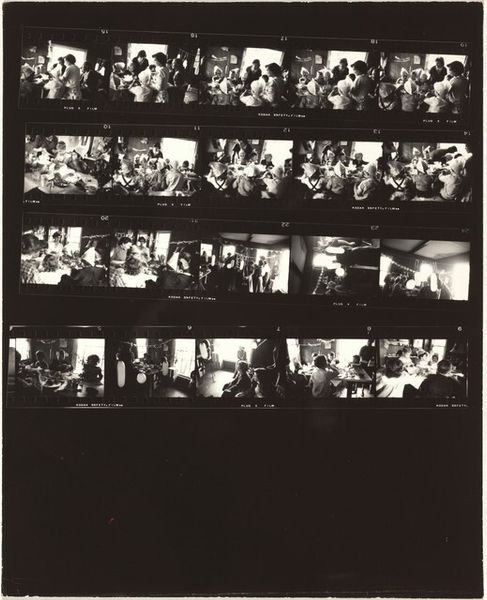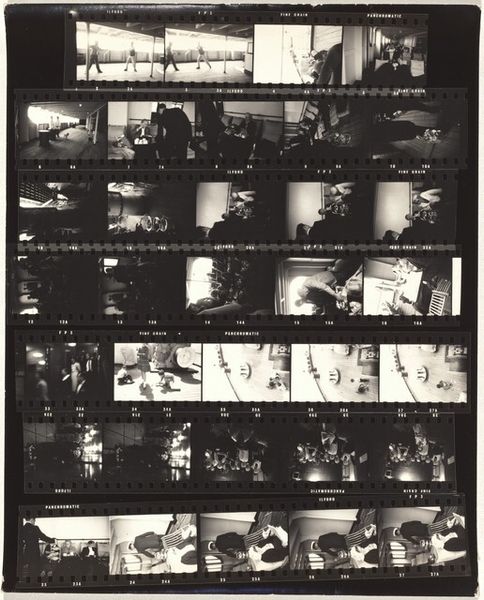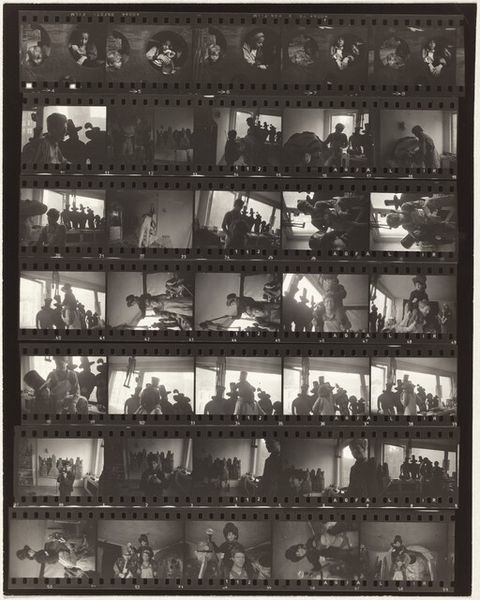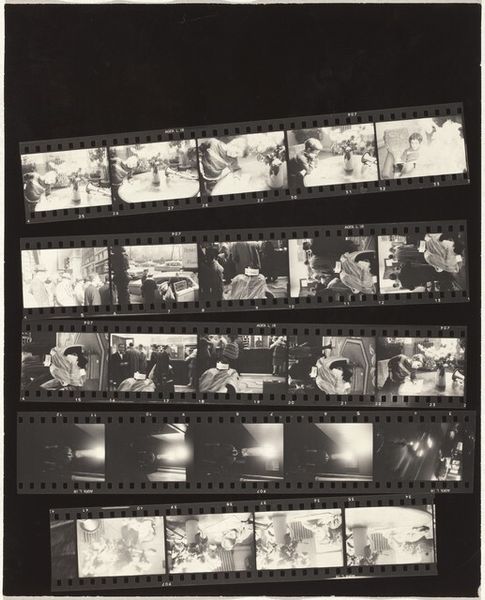
Dimensions: sheet: 25.2 x 20.1 cm (9 15/16 x 7 15/16 in.)
Copyright: National Gallery of Art: CC0 1.0
Curator: Here we have Robert Frank’s "Children's party, Winfield no number" from 1955, captured using gelatin silver print. The presentation as a filmstrip offers a really interesting perspective on this snapshot of mid-century America. Editor: Immediately, it strikes me as a ghost of a memory, faded and fragmented. You get a glimpse, a feeling… is this supposed to be happy? Curator: The brilliance of Frank's work lies in its social commentary. The picture gives us a sense of an era steeped in social conventions and early integration policies, but this is also tinged with anxiety about the future. What looks to be the documentation of children, possibly in school, at the surface seems very bland, normal and idyllic. Editor: "Normal" is definitely the word that sticks in my craw. Those high-contrast images, the grainy texture – they undermine any simple interpretation. Each frame has it's own individual scene. It's a feeling of fractured time that's very un-settling. Like snapshots rescued from oblivion. Curator: Indeed, consider the socio-political climate of 1955. Frank’s focus moves the viewer to really consider how these spaces contribute to a sense of cultural assimilation for children but also isolation for Frank. As he captured life unfolding around him, he provided a critical, insider perspective, asking us to contemplate our own roles. The use of this raw film shows more than his artistic eye, but something we were perhaps not meant to see. Editor: Yeah, it's like peeking through a crack in the wall. The children’s party becomes a symbol of something else… something complex. A cultural theater. I'm still unsure as to where this cultural play exists... Curator: The choice of black and white only emphasizes this, lending a timeless quality. These images push us to examine our role in perpetuating systems of power and to really think through the ramifications of what history can mean. Frank wasn’t just recording; he was provoking change. Editor: Absolutely. A reminder that the past is never truly past – it continues to develop and haunt us. And those forgotten children and faces deserve a memory that goes beyond the cultural narrative. Curator: Very true; Frank forces a necessary cultural confrontation. The images are both an ode to the period, but one deeply concerned with how progress and a future were conceptualized. Editor: Beautifully said, making it all the more imperative to revisit photographs that push you out of your seat of complacency, even after nearly seventy years have passed.
Comments
No comments
Be the first to comment and join the conversation on the ultimate creative platform.
